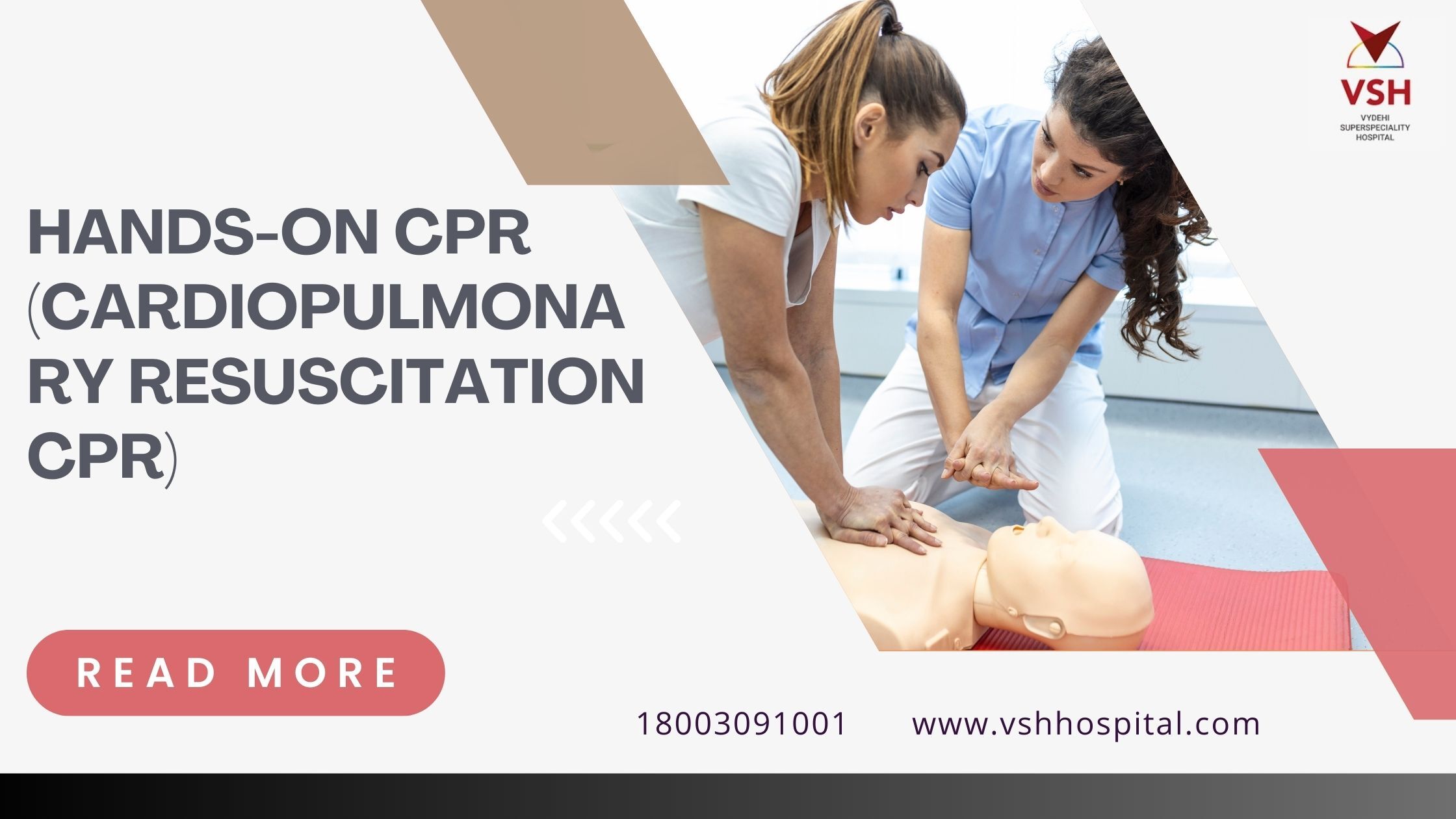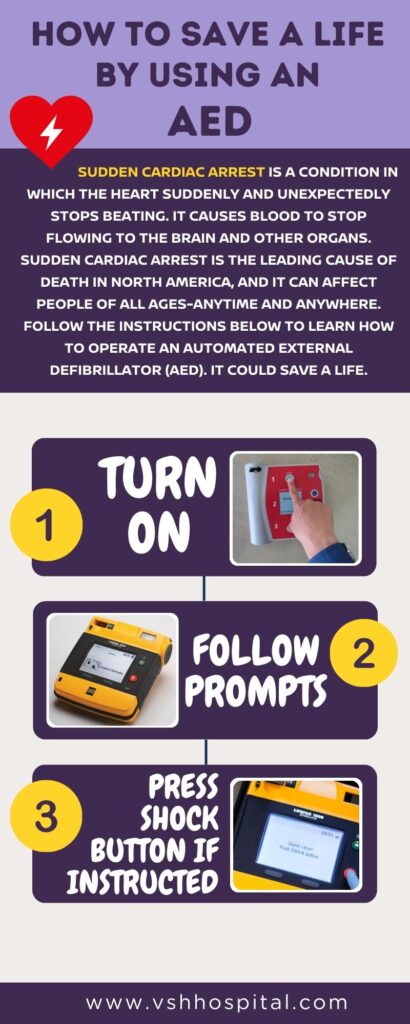
Hands-On CPR (Cardiopulmonary Resuscitation CPR)
Being prepared for emergencies can make all the difference, especially when it comes to cardiac emergencies. Hands-on CPR training provides individuals with the essential skills and confidence needed to respond effectively in such critical situations.
In case of emergency contact VSH Hospital for 24/7 trauma and emergency care.
- Toll-Free Number: 18003091001
- Emergency Helpline: +91-80-22277979
- Our Location : #2, VSH Hospital Road, Ashok Nagar, Bengaluru, Karnataka 560001
Why Providing CPR is Essential?
Saves Lives: CPR isn’t just a technique—it’s a lifeline. When administered promptly, it can dramatically increase the odds of surviving cardiac arrest, doubling or even tripling the chance of survival.
Prevents Brain Damage: By ensuring a steady flow of oxygenated blood to the brain and vital organs, CPR acts as a shield against brain damage and potential fatalities, offering a beacon of hope even in the face of cardiac arrest survival.
Every Minute Counts: Time is of the essence in a medical crisis. With CPR, every precious second becomes a lifeline, mitigating the detrimental effects of delayed emergency response and maximizing the chances of survival.
Faster Recovery: Early intervention is key to a swift recovery. CPR jumpstarts the process, facilitating breathing and blood flow restoration, paving the way for a smoother journey toward recovery and renewal.
Accessible to All: CPR knows no boundaries. It’s a vital skill within everyone’s reach, requiring only a few hours of training. Armed with this knowledge, individuals gain not just skills but also the confidence to step in during emergencies and make a life-saving difference.
What is Hands-On CPR?
Hands-on CPR or also known as Compression-only CPR or Hands-only CPR is a simplified technique for performing Cardiopulmonary Resuscitation (CPR). It focuses only on chest compressions without providing rescue breaths.
| Aspect | Hands-On CPR |
| Technique | Consists of chest compressions only, without rescue breaths. |
| Purpose | Provides continuous blood flow to vital organs by compressing the chest. |
| Training Requirement | Requires minimal training and is suitable for bystanders with no CPR certification. |
| Compression Rate | Compressions are performed at a rate of 100 to 120 compressions per minute. |
| Recognition of Arrest | Emphasizes recognition of cardiac arrest and immediate initiation of chest compressions. |
| Compression Death | Compressions should be at least 2 inches deep but not exceed 2.4 inches. |
| Outcomes | Can be equally effective as conventional CPR for adult cardiac arrest victims. |
The 3 Cs of Hands-on CPR
The 3 Cs of Hands-Only CPR are as follows:
- Check:Check the scene for safety. Shake/ tap and shout- look for signs of breathing
- Call: Call emergency services for assistance. Keep the dispatcher on speakerphone so they can walk you through the process of hands-only CPR.
- Compressions: Give continuous compressions. Place one hand on the other, palms facing down. Interlock your fingers. Lock your arms, keeping your elbows straight. Press firmly on the middle of the person’s chest.
Push hard and fast (at least 2 inches; 100 to 120 compressions per minute). Allow the chest to return to its normal position after each compression.
When the AED arrives, turn it on and follow the prompts.
What to do After CPR?
Check for Signs of Life: Look for breathing, movement, or any response.
Continue CPR if Needed: If the person still doesn’t respond normally, keep doing CPR until help arrives or signs of life show.
Call for Emergency Medical Services: If you haven’t already, call emergency services (108 or VSH Hotline: 18003091001) to report the situation and get professional help on the way.
Use an Automated External Defibrillator (AED): If an AED is available, and you’re trained to use it, follow the device’s prompts. Attach the AED pads to the person’s chest and follow the instructions for administering a shock if advised.

Transport to the Nearest Hospital (If Necessary): If emergency services are delayed or unavailable, and the person remains in critical condition, consider transporting the person to the nearest emergency hospital. Search for the nearest emergency near you and ensure that someone calls the hospital ahead to alert them to the situation.
CPR isn’t just a technique—it’s the rhythm of life, restoring vitality when every moment counts. At VSH Hospital Bangalore, we understand the profound impact of time in emergencies, which is why our team stands ready around the clock to provide expert emergency care. Your insights matter greatly to us. Feel free to share your thoughts or experiences in the comments below.












